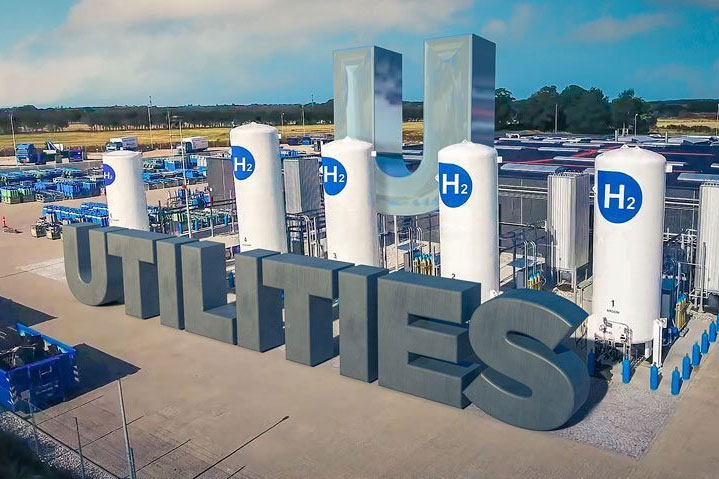Hydrogen From A to Z: U for Utilities
By: GenH2 Staff
Read Time: 3 minutes
Defining The Hydrogen Economy from A to Z: U is for Utilities
Continuing on in our defining the Hydrogen economy from A-to-Z series, we are focusing on the letter U and discussing how hydrogen is used and apart of Utilities.
Our everyday lives and how we live them are directly affected or impacted by our access or not access to utilities that supply water, electricity (power) and gas or fuel/energy source. The importance of utilities is precedent right now in the aftermath of hurricane Ian and recovery efforts and remind us that utilities are essential services that play a vital role in the national and global economic and social development.
The built out of utilities and infrastructure is critical to the future hydrogen economy and moving towards to clean energy sources. Utility companies are making major strides in how to transition to hydrogen as exampled in NextEra’s collaborative effort for Florida’s First Green Hydrogen plant, a potential key for carbon-free electricity. The steps taken by utilities entities like NextEra Energy, which is a leader in electric and gas utilities industry, is indicative of how hydrogen will be infused into our future utilities supply.
Here are some other approaches in how utilities are being prepared to transition to using hydrogen as an energy carrier. Green hydrogen is a promising clean source of much-needed grid flexibility. Electrolyzers requiring large volumes of clean power can facilitate a cleaner, more affordable, more reliable grid if they are used prudently. New renewable projects will need to be built to supply all this power, contributing to a cleaner grid.
To facilitate growth in utilities for hydrogen, in the United States, on June 8, 2022, the Department of Energy announced a loan guarantee of $504.4 million for the Advanced Clean Energy Project (ACES) in Utah. The loan will “finance the construction of the largest clean hydrogen storage facility in the world, capable of providing long-term low-cost, seasonal energy storage.”
In the rural desert town of Delta of Utah where developers are planning to create caverns in ancient salt dome formations underground where they hope to store hydrogen fuel at an unprecedented scale. The Intermountain Power Project (IPP), a nonprofit energy co-op managed by the Intermountain Power Authority (IPA), is addressing hydrogen as a utility energy source. The efforts has just received a conditional commitment for $504.4 million from the Department of Energy’s (DOE’s) federal loan guarantee program. By 2025, the plant is set to deliver renewable energy for storage to the Advanced Clean Energy Storage (ACES)-Delta where it will be converted to green hydrogen. The green hydrogen will be created by splitting H2O atoms via electrolysis. This process itself will be powered by solar or wind energy, and the hydrogen will then be stored in the salt caverns.
Overseas, Greece is being seen as the best location for hydrogen hub in Europe due to its abundant sunny days and wind. The WhiteDragon project in Western Macedonia is set to replace Greece’s largest coal-fired plants, with renewable solar energy parks, which will be supported by green hydrogen production, and fuel cell heat and power production. The project includes electricity utility companies plans to transition to hydrogen as a clean energy source. The Hydrogen Energy Network is an informal group of representatives from the energy ministries in European Union countries that aims to help national energy authorities build on the opportunities offered by hydrogen as an energy carrier. It acts as an informal platform to share information on good practice, experience and latest developments in hydrogen, and to work jointly on specific issues.
As the world’s transitions to hydrogen as an electricity source, the push for utilities and infrastructure to support will become forefront and not taken for granted. GenH2 is one of the companies on the forefront in providing infrastructure solutions, and specifically liquid hydrogen to be used by utilities for the future that are critical in making a cleaner energy supply.



